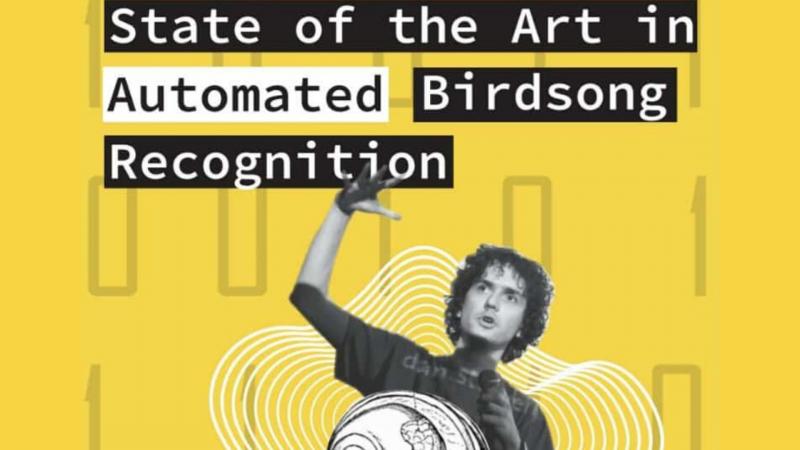
How many bird calls can you recognise? Crows and pigeons, for sure! But have you ever come across an app that can recognise bird calls for you? With apps like eBird and India Biodiversity Portal, identifying and collecting data has become an activity that not just researchers can take part in. Rather, these technological advancements provide a push to scientific research as a whole! A mini-symposium was organised in IISER Mohali to discuss just that.
“Some of the successes of machine learning have come about in intensively researched fields such as speech recognition. We are in the position where people are trying to focus on how to broaden that into fields where as much data does not exist,” says Dr Dan Stowell, the first speaker at the event. “ Labour intensive fields like ecology will benefit from having a helping hand from machines.”
Dr Stowell co-leads the Machine Listening lab in the Queen Mary University of London. In his lecture, he explained machine listening - the use of signal processing and machine learning to extract useful information from sound - and its applications to ecology. When working on the acoustics of bird calls, a spectrogram or a frequency vs time graph, is recorded. From this, information such as the species of the birds and the number of birds can be obtained. With the help of machine learning, Dr Stowell created the app ‘Warblr’ which is an automatic bird recognition app and is available in the United Kingdom.

Dr Dan Stowell speaking at the mini symposium. Photo credits - Aishwarya Viswamitra
His talk was followed by a lecture by Prof N G Prasad, an evolutionary ecologist at IISER Mohali. Prof Prasad spoke about his host organism, Drosophila melanogaster, and how it has evolved in a cold stress resistance. A ‘behind the scenes’ sneak peek of his lab has been covered here.
Additionally, Prof Prasad, along with Prof Manjari Jain, is in charge of an undergraduate lab course at IISER Mohali in which birding is mandatory. This has been going on for ten years! In fact, the data collected by the students, along with student taken photographs have been compiled into a book called Birds of IISER Mohali.
“Natural history is not history!” says Prof Manjari Jain, the organiser of the event, stressing on the importance of observing real organisms. “ A taxonomist is a rare species. Would Darwin have been able to come up with the Theory of Evolution by natural selection if he had not gone out and observed organisms?” she asks. “Observing animals has its own value and not all experiments can be done in a petri dish. We all must learn how to appreciate biology in its true form.”

Prof Manjari Jain delivering her talk. Image credits - Aishwarya Viswamitra
Prof Manjari Jain, the principal investigator (PI) of the Behavioural Ecology lab at IISER Mohali introduced the ‘Minivet’ app, a field guide to birds in IISER Mohali. The app was designed in house by undergraduate students under the supervision of Prof Jain’s collaborator Jimmy Bahuleyan and allows data entry by users, encouraging citizen science.
“Citizen science has a role to play apart from helping science, it makes people feel involved. Not just students, any layman interested in taking photographs gains a certain enthusiasm from such initiatives which allows people to be interested in scientific activities,” says Prof Jain on the importance of apps like Minivet. “You can no longer have people doing surveys and transacts through the length and breadth of India like how Salim Ali did. Citizen science helps and ecology benefits from the data collected.”
This mini-symposium was attended by students and faculty at IISER Mohali and hosted student talks on ecology and evolution.






